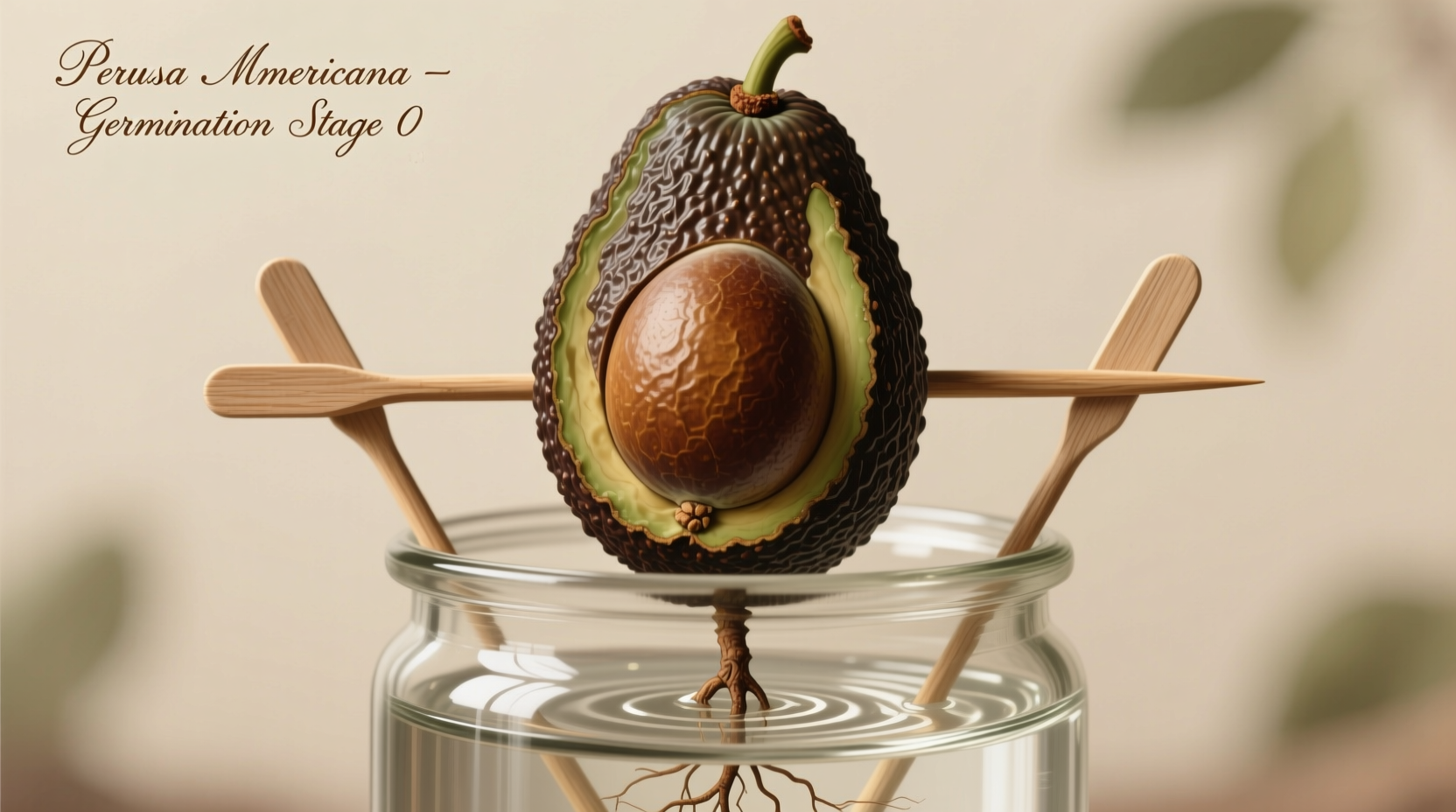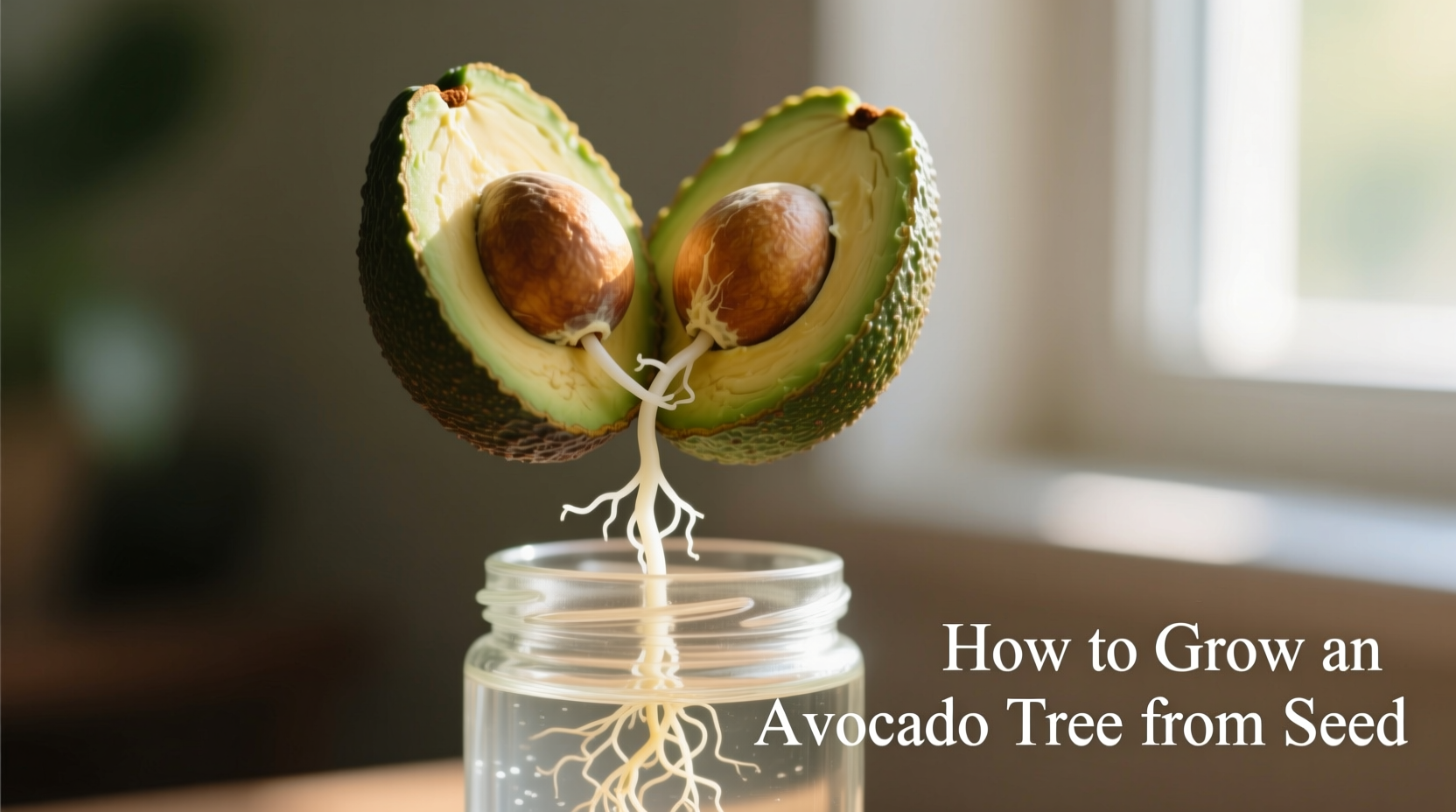Have you ever wondered what to do with that large pit after enjoying a creamy avocado? While you might have heard claims about magical health benefits from grinding avocado seeds, the reality is more practical and grounded in horticulture. As someone who's documented traditional Latin American food practices for over a decade, I can tell you that indigenous communities primarily used avocado seeds for planting new trees, not consumption.
Understanding Avocado Seeds: What You Need to Know First
Before diving into seed preparation, let's clarify some common misconceptions. Avocado seeds contain persin, a fungicidal toxin that's harmless to humans in the fruit's flesh but concentrated in the seed. According to the University of California Agriculture and Natural Resources, while persin isn't toxic to humans in small amounts, there's insufficient research to support consuming avocado seeds safely.
| Avocado Seed Myth | Scientific Reality |
|---|---|
| "Avocado seeds are superfoods rich in antioxidants" | Seeds contain different compounds than the fruit; no human studies confirm health benefits |
| "Grinding seeds makes them safe to eat" | No evidence that processing reduces potential risks; FDA doesn't endorse consumption |
| "Seeds prevent cancer" | Preliminary lab studies on isolated compounds don't translate to human benefits |
Instead of focusing on unproven health claims, let's explore what you can do with avocado seeds—grow your own avocado tree! This traditional Mesoamerican practice has been documented in regions from Oaxaca to Puebla, where communities have cultivated avocados for centuries.
Step-by-Step: Preparing Your Avocado Seed for Planting
Follow these steps to successfully prepare your avocado seed for germination. This method has been refined through generations of Mexican horticultural practice and aligns with modern agricultural recommendations.
- Remove and clean: After eating your avocado, gently remove the seed and wash off all fruit residue with cool water. Avoid using soap as it can inhibit germination.
- Identify orientation: Notice the seed has a pointed top and flat bottom. The flat end is where roots will emerge.
- Dry surface: Pat dry with a clean towel and let air-dry for 24 hours to prevent mold.
- Prepare for water method: Insert 3-4 toothpicks at 120-degree angles about halfway down the seed.

The Water Method: Germinating Your Avocado Seed
This traditional technique, used throughout Central America for generations, gives you visibility into the germination process:
- Place the seed (flat end down) in a glass of water, ensuring the bottom third is submerged.
- Change water every 2-3 days to prevent bacterial growth.
- Position in bright, indirect light (avoid direct sun which can overheat water).
- Patience is key—germination typically follows this timeline:
- Weeks 1-2: Outer brown skin may crack and peel
- Weeks 2-4: Roots begin emerging from the flat end
- Weeks 4-6: Stem sprouts from the pointed end
- Weeks 6-8: First leaves develop (ready for soil transplant)
According to research from the American Society for Horticultural Science, avocado seeds germinate best at temperatures between 65-75°F (18-24°C). If your seed hasn't sprouted after 8 weeks, it may be from a commercially hybridized variety with lower germination success.
Alternative Planting Methods and Their Success Rates
While the water method is popular for its visual appeal, traditional Mexican agricultural practices often use direct soil planting. Here's how different methods compare in terms of practicality and success:
- Water suspension method: Best for beginners, allows monitoring of root development, but requires more maintenance. Success rate: 70-80% with proper care.
- Direct soil planting: Wrap seed in damp paper towel, place in sealed bag for 2-4 weeks until roots emerge, then transplant to pot. Closer to traditional field methods. Success rate: 60-70%.
- Whole fruit burial: Some indigenous practices involve burying nearly-rotten avocados directly in soil. Less reliable for home growers. Success rate: 30-40%.
Important context boundary: Commercially available Hass avocados (the most common variety in supermarkets) are often grafted trees. While your seed-grown plant will produce fruit, it may take 5-13 years and the fruit characteristics might differ from the parent tree.
Practical Uses Beyond Planting
If you're not interested in growing an avocado tree, here are legitimate uses for the seed:
- Natural dye: Avocado seeds create beautiful pink hues for fabrics. Simmer seeds in water for 1-2 hours, strain, and use the liquid as dye.
- Composting: While slow to decompose, crushed seeds add carbon to compost piles.
- Ornamental use: Dried seeds make interesting craft materials for jewelry or decorative arrangements.
Be wary of claims suggesting avocado seeds can be used medicinally. The U.S. Food and Drug Administration has not approved avocado seeds for any therapeutic use, and consuming them may cause digestive discomfort.
Troubleshooting Common Avocado Seed Problems
Even with careful attention, you might encounter these common issues:
- Mold development: If white mold appears on your seed in water, gently scrub with soft brush and change water. Prevent by using filtered water and changing it more frequently.
- No sprouting after 8 weeks: The seed may be from a fruit treated with growth inhibitors. Try a seed from a different avocado source.
- Roots but no stem: Ensure the top of the seed remains above water. Move to slightly warmer location (but not direct heat).
- Yellowing leaves after transplant: This indicates transplant shock. Reduce watering temporarily and provide indirect light for 1-2 weeks.
Remember that avocado trees grown from seed make excellent houseplants even if they never produce fruit. Their glossy leaves and tropical appearance bring a touch of Mesoamerican beauty to any home.
Final Thoughts on Avocado Seed Utilization
While social media abounds with claims about grinding avocado seeds into smoothies for health benefits, traditional Latin American culinary practices focus on their horticultural value. The most practical, evidence-based use for avocado seeds is growing new trees—a practice documented in indigenous communities for centuries.
By following these straightforward steps, you can transform what would otherwise be kitchen waste into a living plant that connects you to the rich agricultural heritage of avocado cultivation. Whether you're attempting to grow your first avocado tree or simply want to reduce food waste, understanding the realistic possibilities for avocado seeds helps separate horticultural fact from nutritional fiction.











 浙公网安备
33010002000092号
浙公网安备
33010002000092号 浙B2-20120091-4
浙B2-20120091-4